November 2023
The last outreach event that I will be attending this year was the Annual Exhibition of the British Entomological and Natural History Society. The weather forecast was for very heavy rain, so I tried not to carry too much, just one bag with my camera and another bag with my Olympus SZ4045 stereomicroscope and shadowless illuminator. The Exhibition is a leisurely affair, so Paul Smith and I had time for some long and interesting chats with visitors about stereomicroscopes, compound microscopes, digital microscopes, LED illuminators, cameras for photomicrography, stacking and stitching.
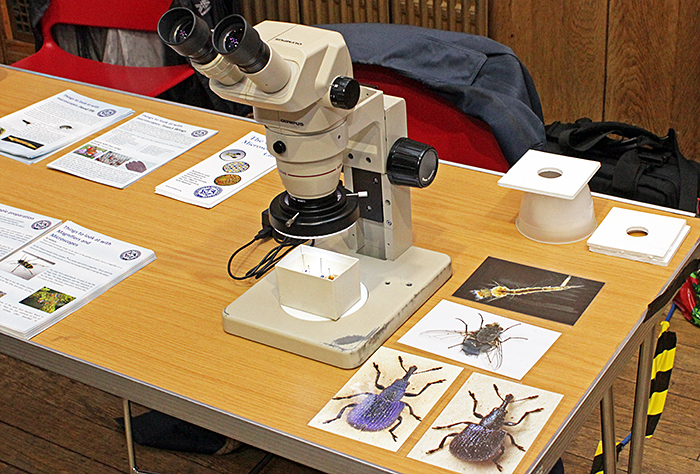
Olympus SZ4045 stereomicroscope
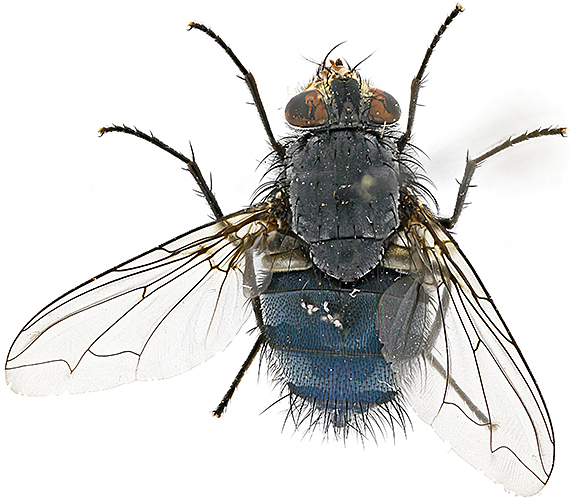
Blue bottle (Calliphora vomitoria) lit with shadowless illuminator
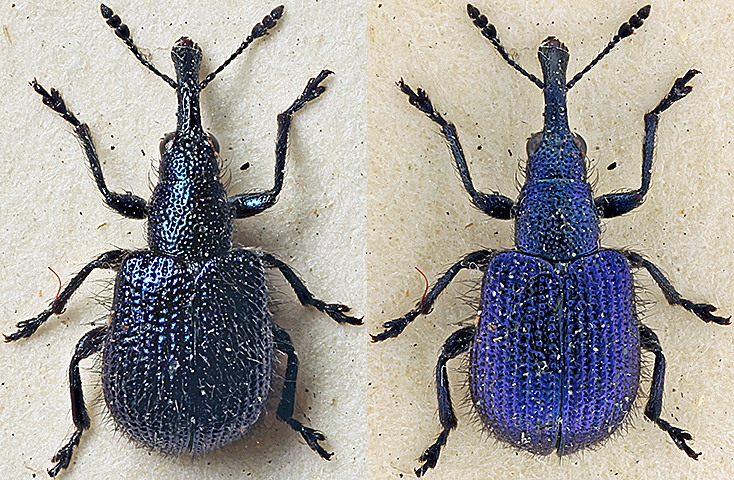
Iridescent beetle lit by a desk lamp and a shadowless illuminator (right)
October 2023
Like many owners of trinocular Olympus BH-2 microscopes, I use a full-frame digital camera and an NFK 2.5× LD photo eyepiece when I am taking photomicrographs. The “LD” version is common, but when the BH-2 range was launched the photo eyepieces were “L” versions. These are not common, but I have one and I have sometimes wondered what difference there might be in image quality. I finally got round to experimenting this month, and for interest I also tried the older FK 2.5× photo eyepiece that was designed for use with the short-barrel objectives of the BH era.
For the subject, I used an S1 stage micrometer from Graticules Ltd, which has a 10 mm scale with 0.1 mm divisions. I arranged it diagonally, so that I had numerals positioned in one corner while I focused on a scale line near the centre. I used my Olympus SPlanApo 10× objective because I expected it to have the least chromatic aberration. I used my full-frame Canon EOS 5D Mark II (because its sensor is the same size as 35 mm film, the format for which these photo eyepieces were designed) controlled by EOS Utility, and focused on my computer screen. I took single shots, not stacked, because I wanted to examine the corners.
I have cropped the images to show only a 1600×1600 portion from the top left corner of the 5616×3744 original. To see full-size images in Windows, right-click and choose “Open Image in New Tab”.
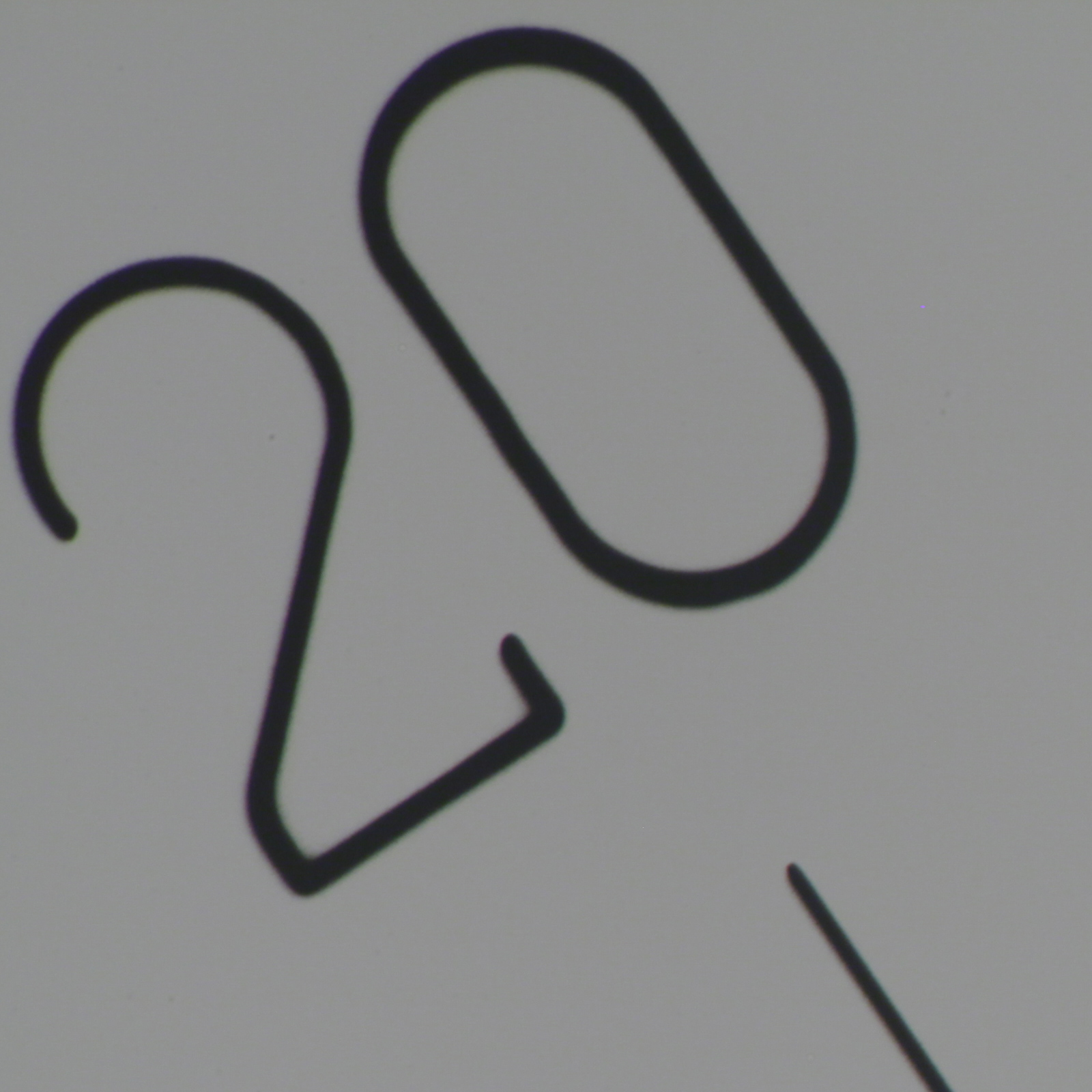
Olympus NFK 2.5× LD photo eyepiece
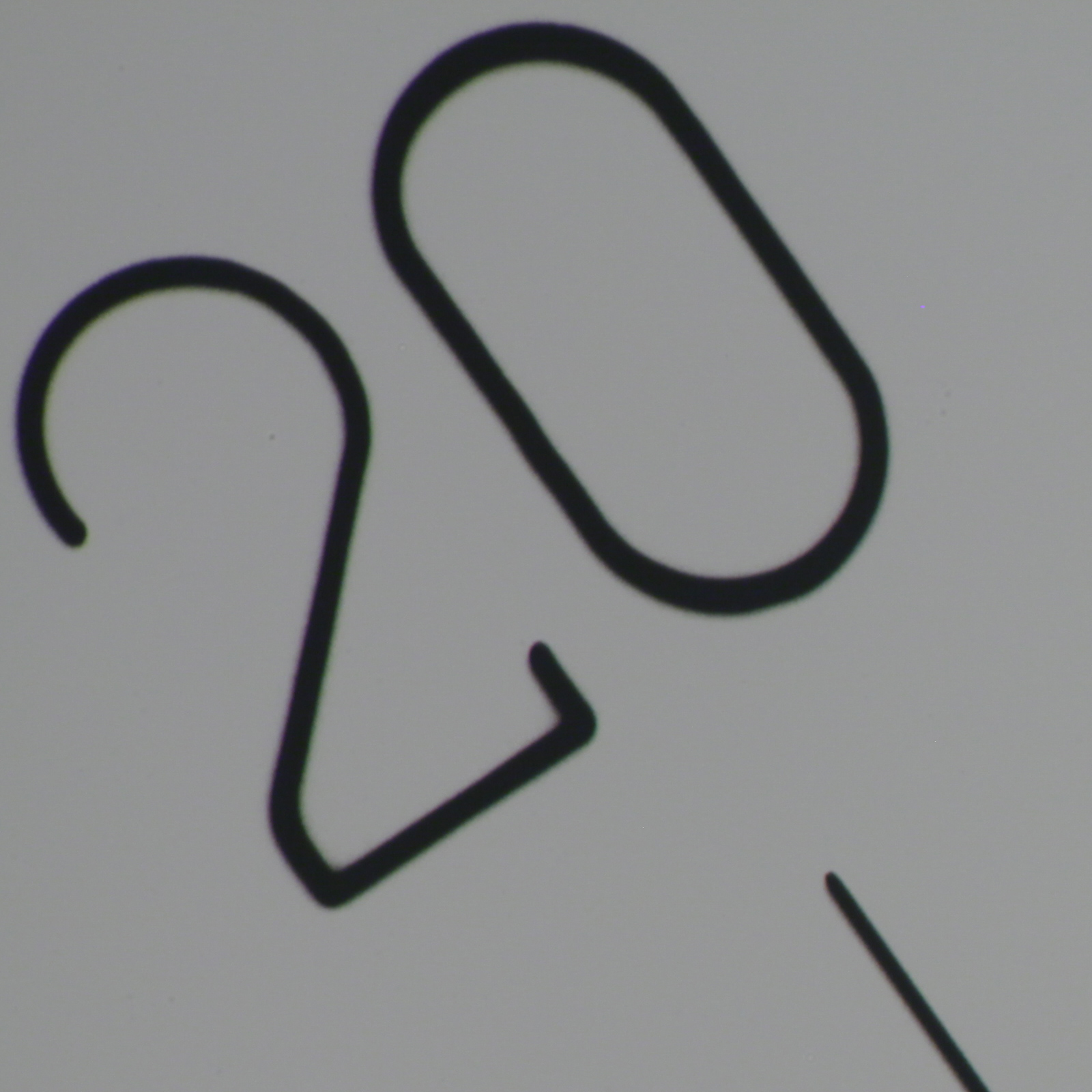
Olympus NFK 2.5× L photo eyepiece
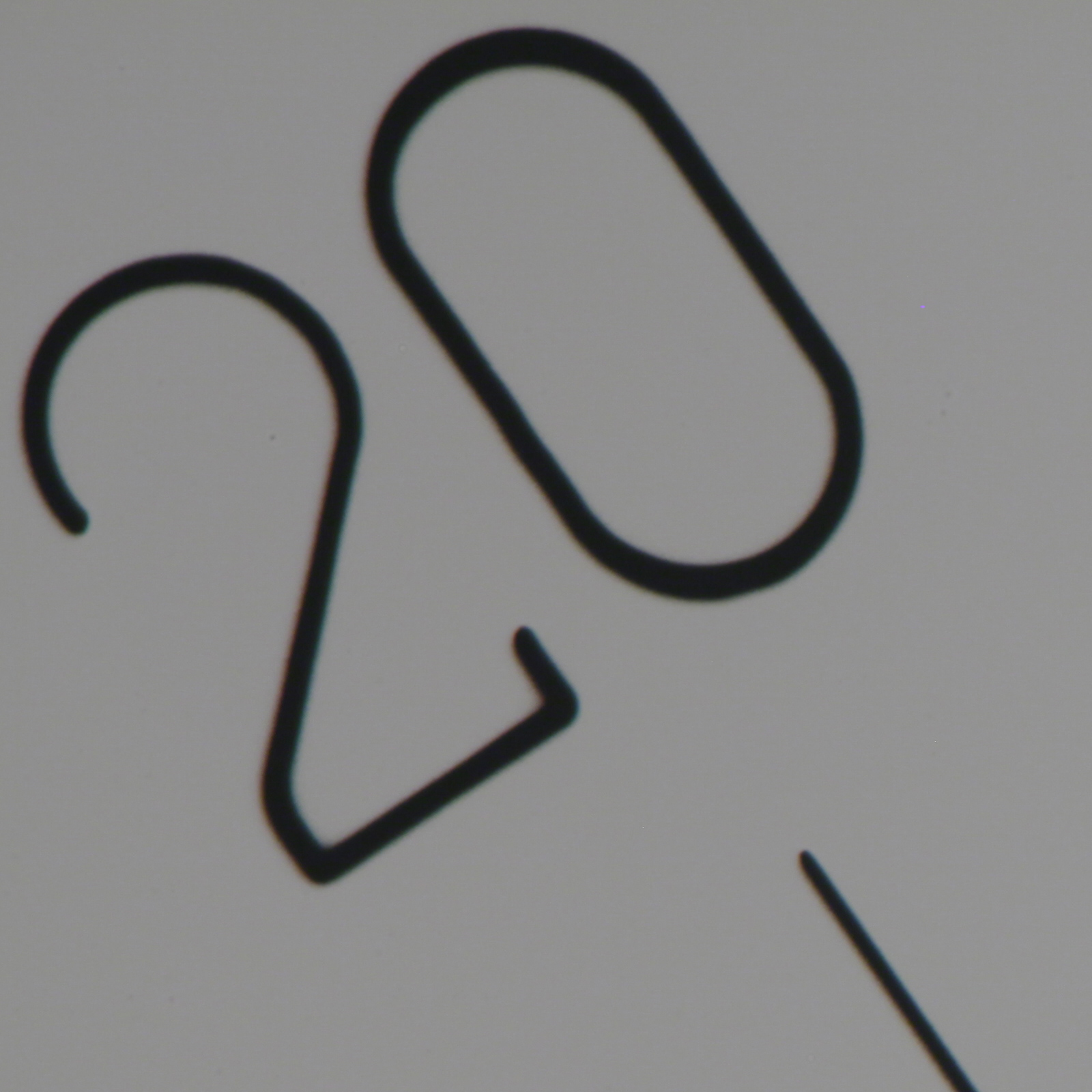
Olympus FK 2.5× photo eyepiece
All of the eyepieces were clean, with no smears, scratches or fungus and very little dust. I didn’t expect much difference between the LD and L eyepieces, but surprisingly the L seems to have a bit more contrast. I am very surprised at the similarity between the NFK and the FK, because they are supposed to be corrected for different ranges of objectives.
I removed the password from the auction web pages and image galleries on 4th October, when the printed catalogue was posted to members with the summer 2023 issue of the Journal. There are some nice microscopes, books and slides, but nothing that I want.
I want to the Annual Exhibition of Microscopy in Potters Bar on Saturday 14th October to take photos and take notes for the meeting report, and of course to admire the exhibits and catch up with old friends. Soon after I got home, I removed the passwords from the pages and image galleries for the Barnard photomicrographs, the Barnard videos and the artwork. The public can only see small images on the website, but Quekett members who log in can see large images. I am slower than I used to be, and it took me a few days to complete the report with notes and photos of all of the exhibits and demonstrations.
A week later, I helped out on the Quekett stand at Apple Day in Chinbrook Meadows, another outreach event where most of the visitors are families with small children. We shared a gazebo with Thames21, which protected us from most of the rain. There is no electricity supply, so I borrowed my wife’s powerbank again to run an LED ring-light on my Olympus SZ4045 stereomicroscope.
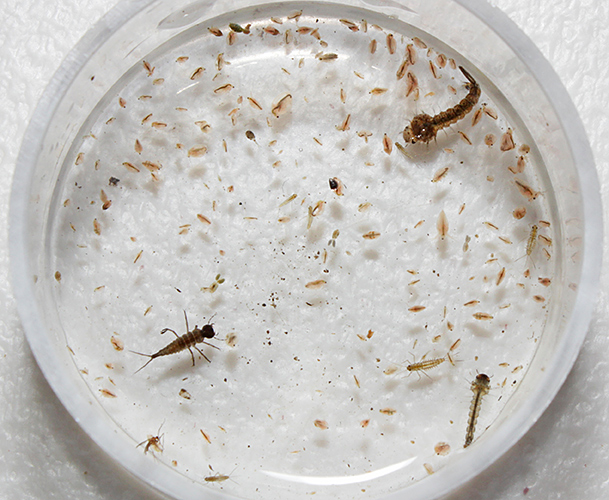
Specimens in a small Petri dish
The specimens from the River Quaggy, which runs through the Meadows, included waterfleas (probably Daphnia), freshwater shrimps (Gammarus), freshwater lice (Asellus), bloodworms (larvae of non-biting midges, Chironomidae), mayfly nymphs (Ephemeroptera), stonefly nymphs (Plecoptera), cranefly larvae (Tipulidae), mosquito larvae, leeches, pond snails and ramshorn snails.
I helped out on the Quekett stand at the National Honey Show for all three days, 26th to 28th October. On the first day, I took my Olympus SZ4045 stereomicroscope to show set specimens of a honeybee and a wasp and prepared slides of parts of honeybees. On the last day, I took my trinocular Olympus CH-2 and the parts needed to connect my full-frame Canon EOS 5D Mark II. The camera was tethered via USB to my Lenovo laptop running EOS Utility software. I used this arrangement to show how easy it is to take good photomicrographs, using slides of flower-bud sections prepared by Colin Kirk.
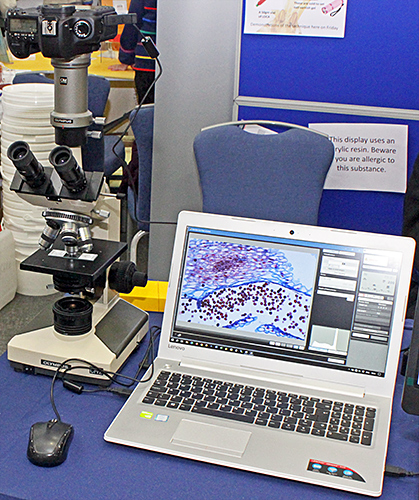
Olympus CH-2 microscope and Canon EOS 5D Mark II camera
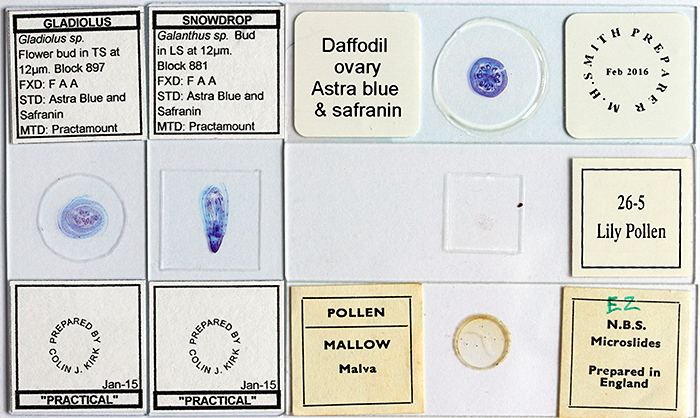
Pollen slides
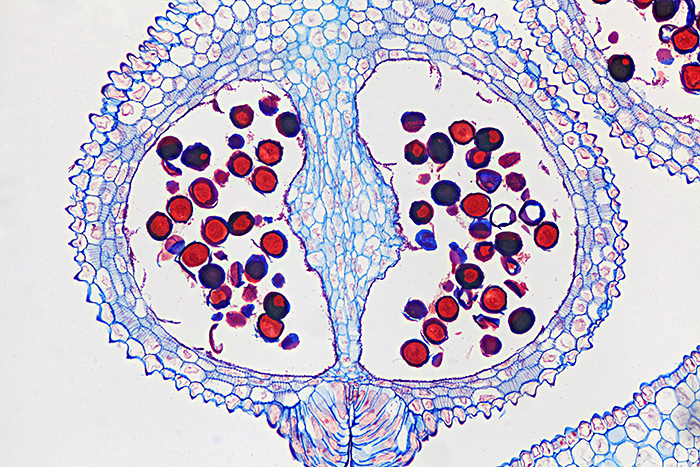
Pollen in flower bud of Gladiolus sp. (slide by Colin Kirk, transverse section)
(SPlan 10× objective, NFK 2.5× photo eyepiece, stack of 10 images at 0.004 mm steps combined in Zerene Stacker)
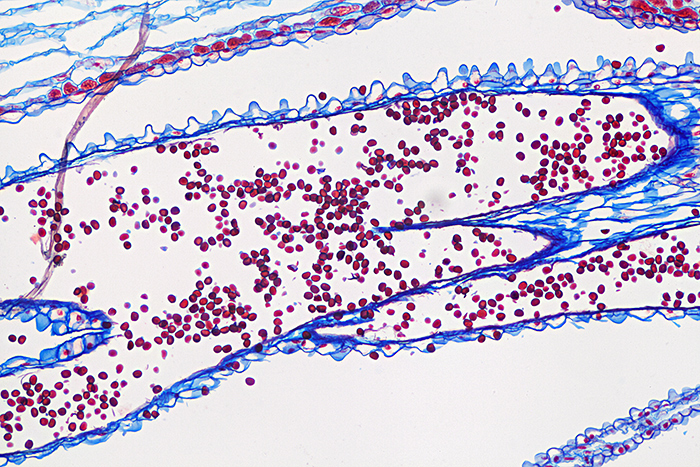
Pollen in flower bud of snowdrop (Galanthus sp.) (slide by Colin Kirk, longitudinal section)
(SPlan 10× objective, NFK 2.5× photo eyepiece, stack of 11 images at 0.004 mm steps combined in Zerene Stacker)
September 2023
I helped out at two large, family-friendly outreach events this month. The first was the Grove Park Carnival in Chinbrook Meadows in south-east London, where we shared a gazebo with Thames21 again.
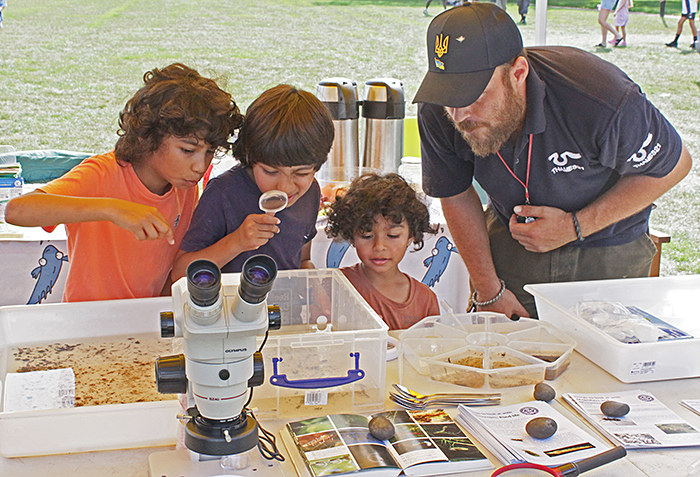
Michael O’Neill with young visitors
I only had my Canon EOS 650D with the 18–55 mm kit lens, but I managed to get some reasonable photographs of specimens.
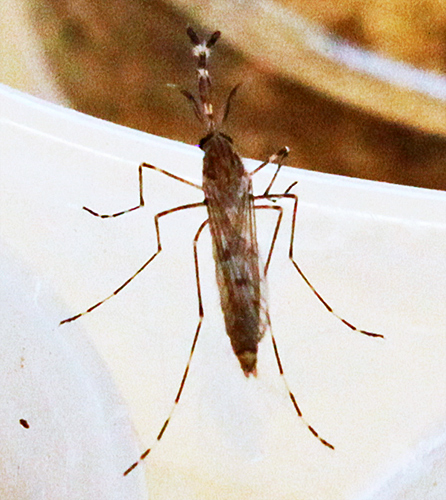
Aedes annulipes mosquito (newly emerged)
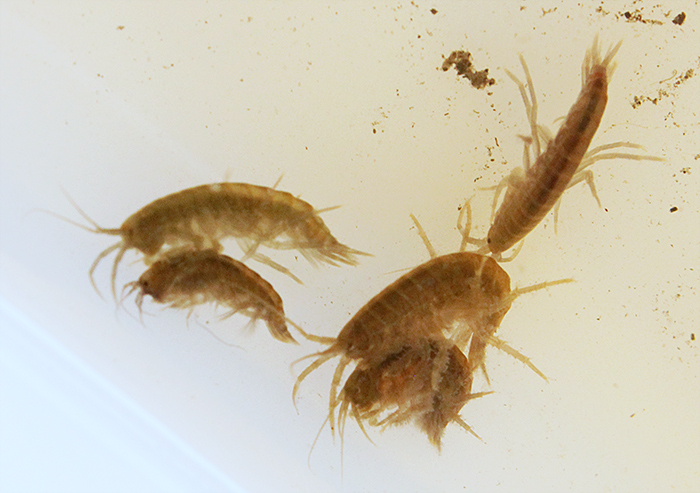
Freshwater shrimps (Gammarus)
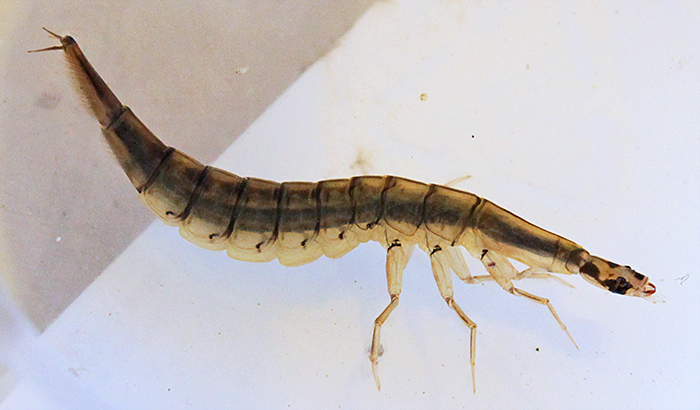
Lesser diving beetle larva (Acilius sulcatus)

Three-spined sticklebacks (Gasterosteus aculaeatus)
The next weekend was Open Day at Wimbledon Common, much nearer to home. There is a new Wildlife Garden just outside the Information Centre, and it includes a pond, so we took some samples from there as well as from the cattle trough. There was some filamentous algae in the pond, but not many invertebrates yet, although we did find a few chydorid waterfleas (Chydorus sp.), bdelloid rotifers, nematodes and ostracods, and a small dragonfly nymph.
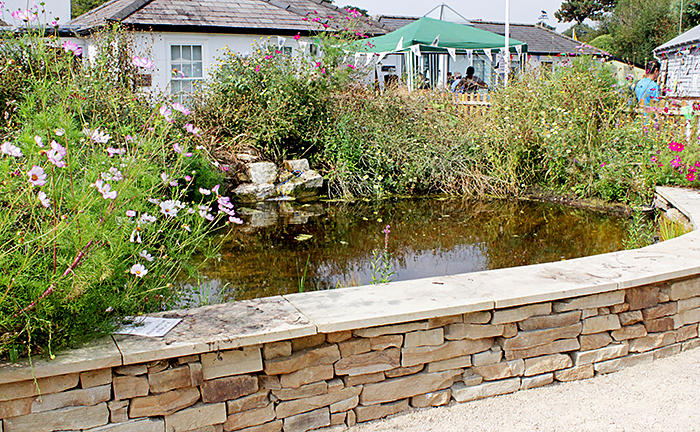
New pond in Wildlife Garden
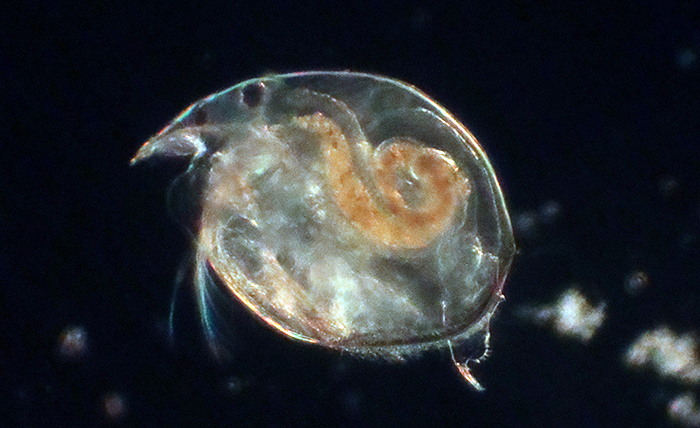
Chydorid waterflea (Chydorus sp.) [by Paul Smith]
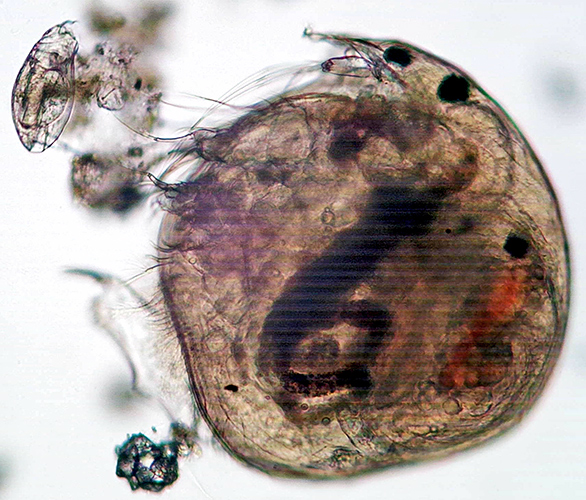
Chydorid waterflea (Chydorus sp.) and rotifer [by Neil Henry]

Ostracod [by Paul Smith]
I have been helping out with the Quekett website for a while, in addition to writing reports on the meetings that I attend. There will be an auction for Quekett members this year. Other people have taken the photographs of the lots, so I have been cropping and adjusting them while I prepare the image galleries, all protected by a password. The auction will be launched when the Summer 2023 issue of the Journal is posted. I have also been busy preparing web pages and image galleries for the Annual Exhibition of Microscopy next month. The pages and galleries for the Barnard photomicrographs and videos and the artwork are just about ready, but protected by a password until the results are announced at the Exhibition.
When I retired at the end of 2008, I intended to spend a significant amount of time on microscopy, but other things took up my time, one of which is about to come to an end. On 28th September, the second edition of ISO 1750 Pesticides and other agrochemicals — Common names was finally published. I have been working on this project for the last 10 years, devising a set of fields for an XML data set, learning the XSLT programming language so that the XML data could be viewed in web browsers, copying and marking up the data on over 1200 pesticides from my website (Compendium of Pesticide Common Names), re-drawing hundreds of structural formulae, and re-checking all of the systematic names. When I started collecting data on pesticides on a card index in 1972, I never dreamed that it would one day become a popular website, let alone become the basis of an ISO standard. I have enjoyed working with the knowledgeable and helpful people on the BSI and ISO committees for over 40 years, and collecting and validating data is an ideal pastime for someone with Asperger’s syndrome. However, I am getting older and slower, and I am making too many mistakes now, so I am going to leave the committees soon.
August 2023
Some time ago, I acquired an Olympus CT-4 phase telescope for the bargain price of £2 because its focusing was jammed solid. I was confident that I could fix it because a few years ago I fixed one with a similar problem by slowly dripping 100% isopropyl alcohol just below the black top. However, this time it didn’t work, even though I tried several times, so I needed to try a different approach. I knew that the bottom lens unscrewed easily to reveal a disc with a small central hole, so I used a pipette to squirt isopropyl alcohol through the hole so that it would reach the bottom of the focusing helix. I kept the tube almost horizontal, so that the alcohol would not run onto the lens at the top. This approach also failed, so I turned to Google and found a recommendation to use acetone. This still did not let me unscrew the two parts, not even with my Boa Constrictor strap wrenches. So I tried desperate measures, clamping the lower part in a vice and trying to turn the top with a wrench, using Plastazote strips to protect the metalwork. Eventually I tried a Mole grip with no protection to hold the top, and with a lot of force this finally allowed me to unscrew the two parts, although it did damage the knurling. Then I cleaned out the hardened green grease with isopropyl alcohol, kitchen tissue and an old toothbrush, left it to dry, and lubricated the threads with Vaseline petroleum jelly. Finally I touched up the damaged knurling with matt black Humbrol Enamel paint.
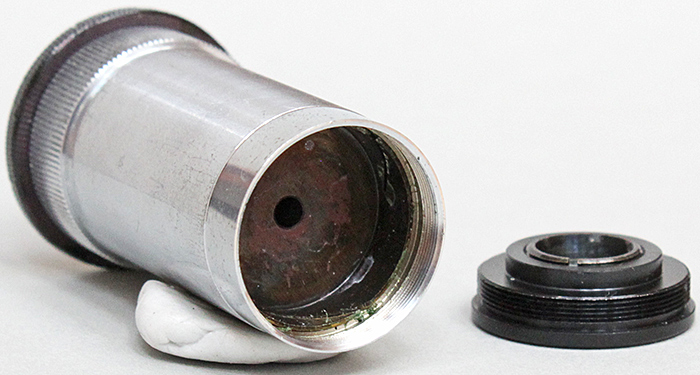
Olympus CT-4 phase telescope
It is four years since the last Quekett excursion to the Warnham Local Nature Reserve, so I was keen to go this year despite the forecast of heavy rain from Storm Antoni. I could only carry one bag plus an umbrella, so I took my camera but not a microscope. We were based in the new Discovery Hub, close to the café and the new pond.
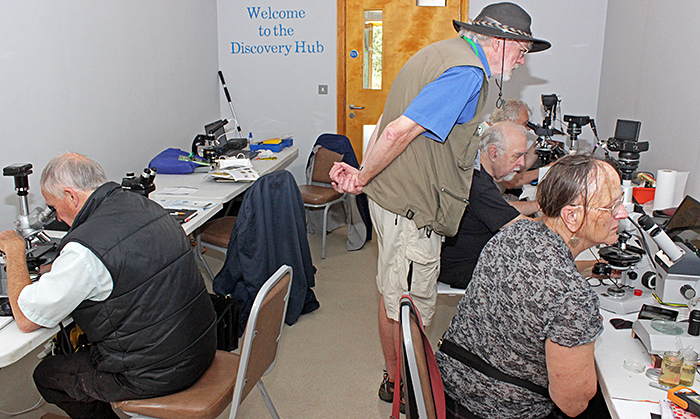
Quekett members in the Discovery Hub
A week later was Microscopium, the Quekett’s annual sales event, in Letchworth Garden City. There was an overtime ban affecting the trains, but fortunately the ones that I needed were running almost normally. There are sometimes bargains to be had, and this year I picked up a used BH2-5RE nosepiece, a new 45-LBD-IF filter (new version of the 43LBD-W45 filter, without the metal mount) for my CK2, and two new spare bulbs for my BH2-DO dual-oberver attachments. I had accumulated some Nikon caps for eyepiece tubes, an Olympus BH-CD Abbe condenser and a spare Olympus IF 550 green filter, and I managed to sell them.
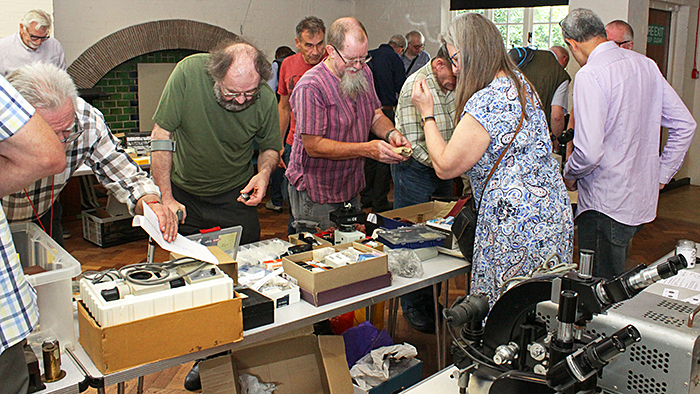
David Peston’s sales table at Microscopium
July 2023
My website seemed to be running well with my new Internet Service Provider (ISP), until I noticed that I was getting hardly any e-mails from the contact form. The contact form that I had used for about 20 years did not work with the new ISP, because it was written using version 4 of the PHP scripting language and I could not work out how to update it to run under the current version 8. So I had installed a new one that had good reviews, but when I checked the validation I discovered that it was only allowing a small range of characters, so anything with numbers, question marks, accented or foreign characters could not be sent. Now I have found another new one from Kontaktformular.com. It seems to be working o.k., but I have not yet worked out how to change its appearance.
June 2023
I attended 3 events this month. The first was a Home Counties Meeting in the Eastbrookend Discovery Centre in Dagenham, where there are lakes, woodlands and grasslands for collecting. I took my Olympus CH-2 compound microscope for another attempt at a moss safari, and found a few nematodes, a couple of rotifers moving around in the debris, and some small ciliates. There were also lots of dead rotifers, but no sign of any tardigrades.

Me with my moss safari [by Robert Ratford]
Neil Henry, Paul Smith and I participated in the Wimbledon Common Weekend of Nature as part of the Club’s outreach programme. I took my Olympus SZ4045 stereomicroscope to show some specimens from the Common, but I spent most of my time on the guided walks.
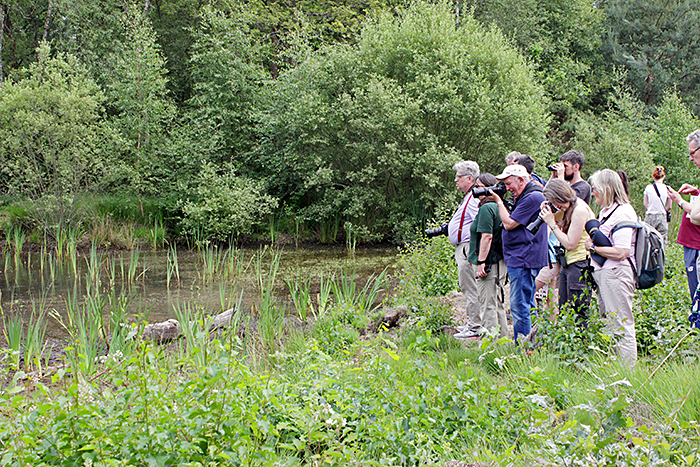
Bluegate gravel pit
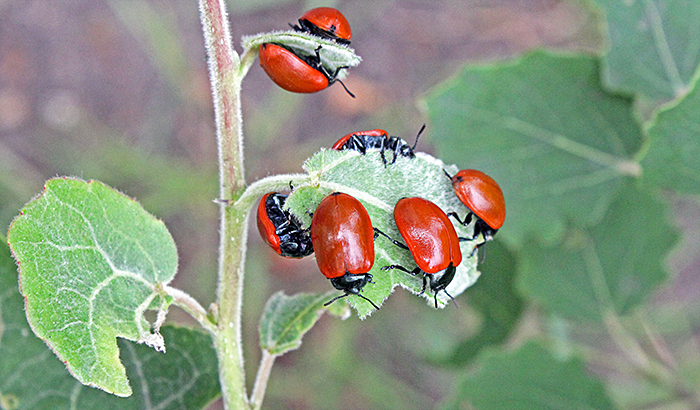
Poplar leaf beetles (Chrysomela populi)
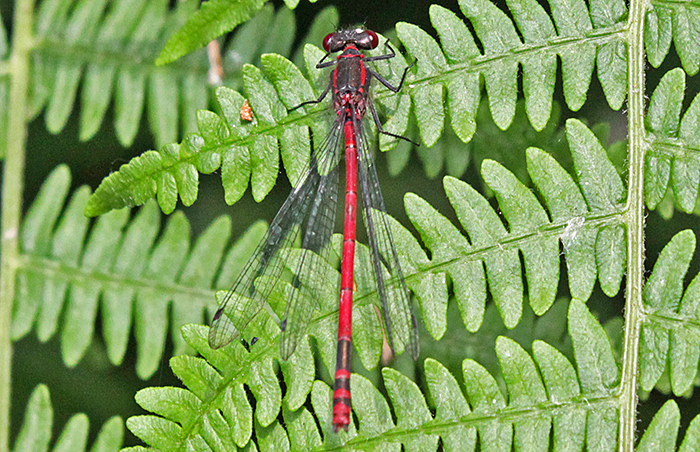
Large red damselfly (Pyrrhosoma nymphula)
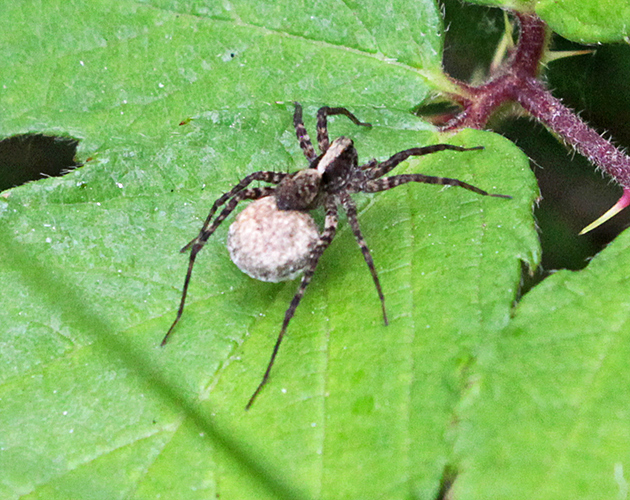
Wolf spider (Lycosidae) with circular egg sac
The final event of the month was the Workshop on polarised light, held in the Natural History Museum. I took some polarisers, analysers and retarders to show how my accessories have evolved. My first ones were a linear polarising filter for a camera, and a disc of polarising film bought on eBay as the analyser. I eventually found the proper Olympus items on eBay, and found that they provided only a small change in the quality of images. Much later, I acquired the Olympus “Simple Polarizing Attachment” and whole wave and quarter wave tint plates at bargain prices, but found that they were not very versatile becase they are intended for quantitative work and so the tint plates cannot be rotated. I made my first retarders from various plastic films held in plastic 35 mm slide mounts. The aperture was only just big enough to avoid vignetting, so I changed to annular cardboard mounts that I cut from cornflake boxes using a compass cutter.
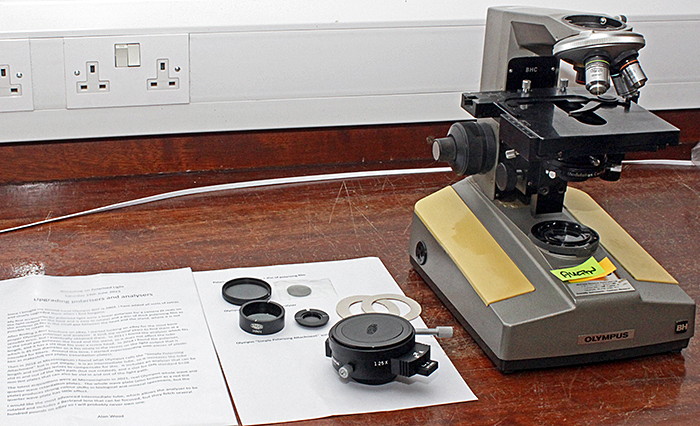
Polarisers, analysers and retarders
I have known for a few years that the Google Chrome and Microsoft Edge web browsers were making it difficult for people to download my PDFs of Olympus microscope manuals and brochures, because my website did not have an SSL certificate and therefore was regarded as not secure. My Internet Service Provider charged a lot for a certificate, so I needed to switch to another one, and because they do not give refunds I wanted to time the switch just before renewal. This year I managed it, so users can now see a padlock icon, and the address is now https://www.alanwood.net/olympus/downloads.html.

Secure connection to my Olympus downloads page
May 2023
As a contribution to London Rivers Week, CPRE London coordinated a family-friendly Nature Discovery Day in Chinbrook Meadows, and the Quekett was invited to provide some microscopes for observing specimens collected from the River Quaggy. As part of the outreach programme, Paul Smith and I took some simple microscopes and some books and leaflets, and had a good time explaining things to children and adults.
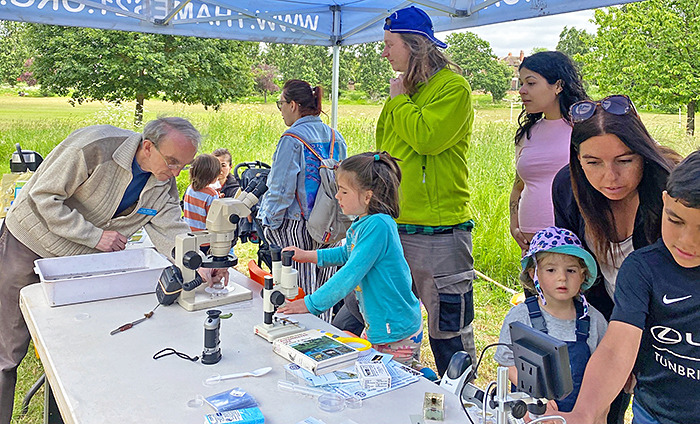
Visitors to the Quekett stand (with me on the left, photo by Carolina Pinto)
April 2023
Paul Smith ran a workshop on epi-illumination in the Natural History Museum, and I took my Olympus SZ4045 stereomicroscope and home-made shadowless illuminator to show how well it works with metallurgical specimens as well as biological ones.
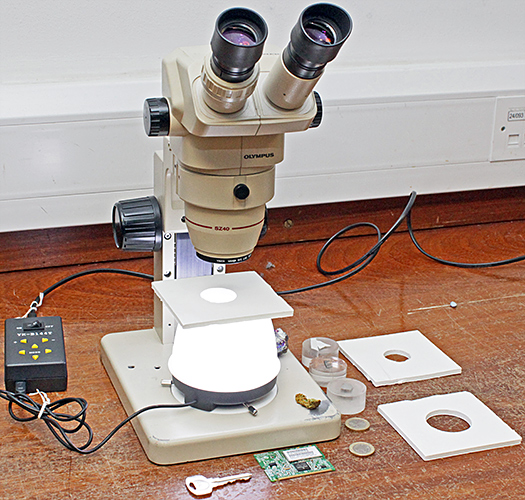
My demonstration at the epi-illumination workshop
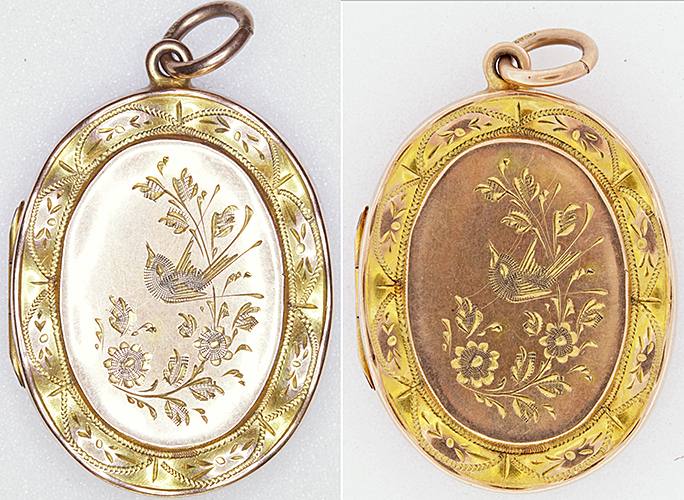
Locket (left: LED ring-light, right: shadowless illuminator)
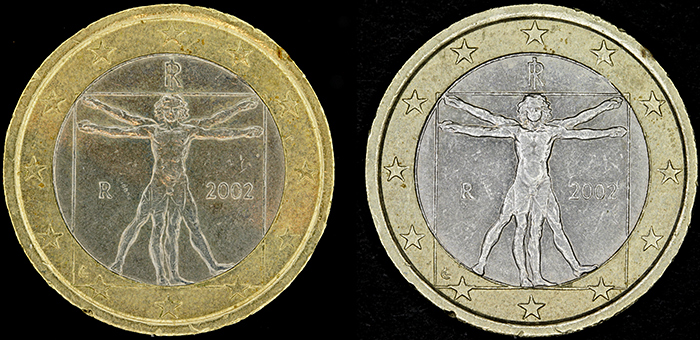
1 euro coin (left: shadowless illuminator, right: LED ring-light)
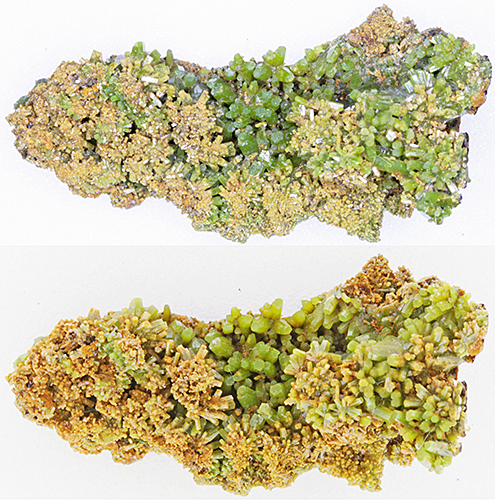
Pyromorphite (top: LED ring-light, bottom:shadowless illuminator)
There were some simple epi-illumination adapters on display, but nothing like the ones for Olympus microscopes. I couldn’t carry my Olympus BHMJ metallurgical microscope as well as my stereo, so I took some photos to add to the meeting report.
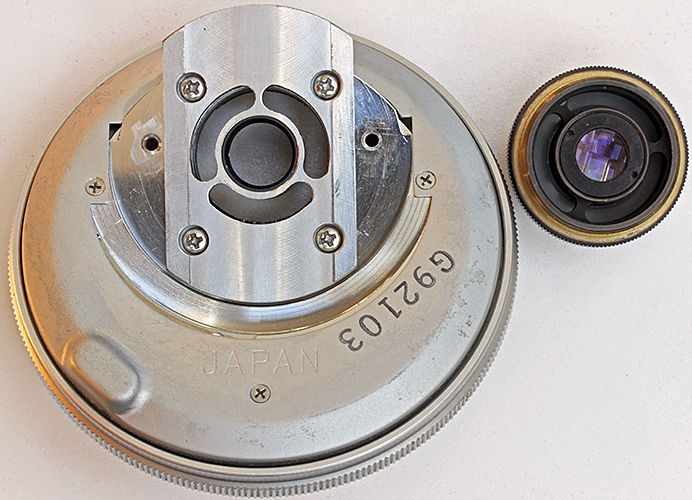
Olympus BH-NRE nosepiece and Neo 5× objective
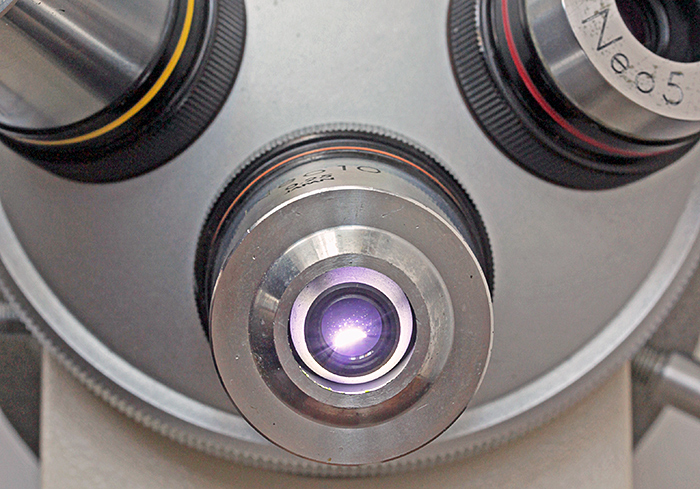
Olympus Neo 10× objective showing dark-field ring of light
Later in the month, Paul Smith and I attended the 2023 Members’ Day and AGM of the Amateur Entomologists’ Society, held in the Natural History Museum, as part of the Club’s outreach programme. I took my trinocular Olympus SZ4045 stereomicroscope and my Canon EOS 5D Mark II camera, and Paul kindly brought a portable monitor to attach to the camera.
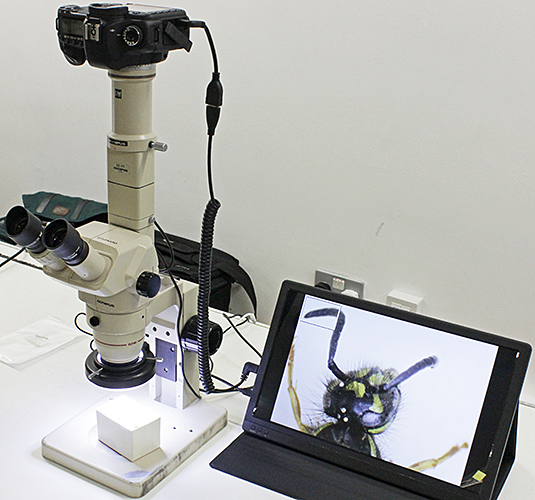
Olympus SZ4045 trinocular stereomicroscope
Several of the AES members stopped by to see our displays, and we were able to help with advice on buying and using microscopes, and taking photomicrographs with digital cameras and mobile phones.
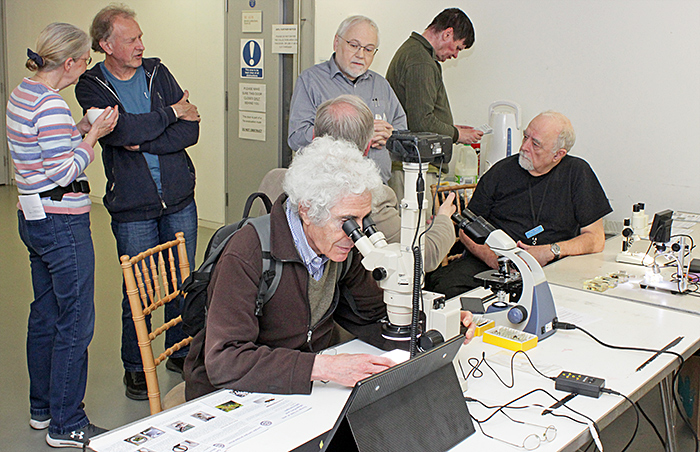
Visitors to the Quekett display
March 2023
On the first of March, a new version of the software behind the Quekett website was launched, after lots of work by the new webmaster, Peter Wyn-Jones. It now runs on the latest versions of WordPress and PHP, so it should be faster. The arrangement for signing in has changed too, so that members are verified in the membership database and will not need a new password each year.
The Reading Convention is now run by the Quekett, and has had to move to a new venue, Sonning Common Village Hall. It is not very far from the Reading, but there is only one bus per hour. It is a long journey for me, but a good opportunity to catch up with old friends and look for bargains. The new webmaster was there, but he was busy selling items from the estate of Peter Massingham, so I took some photos and wrote the meeting report for the website.
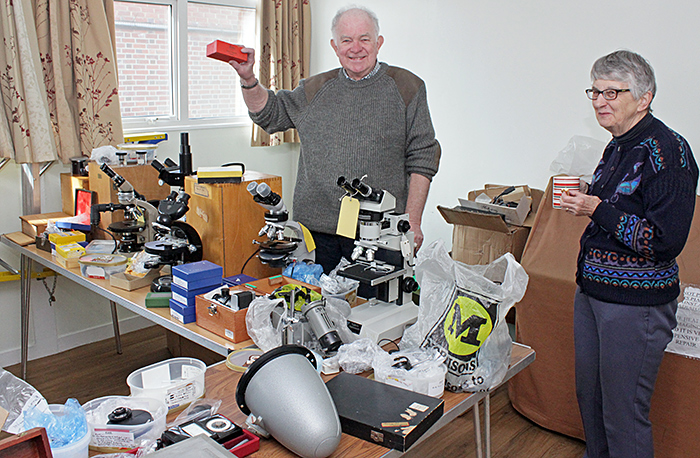
Peter Wyn-Jones and Pam Hamer
February 2023
The first Home Counties meeting of the year was held in the main hall of Church Gate House Centre, where the South Thames Discussion Group met for several years, adjacent to St Andrews Church in Cobham, Surrey.
I prepared some of my home-made ball tables for the gossip in the afternoon, but there was so much else to see that I decided to keep them for another occasion.
January 2023
The Wimbledon Common Nature Club has re-started after a break because of Covid-19. It is run by Auriel Glanville and two teenage assistants (Alexander and Oliver Mallett) and welcomes children from 6–14 years old to come and discover the world of nature on the Common. They meet for 2 hours each month in the Information Centre, the same venue as used by Quekett members on excursions, the Weekend of Nature and the Open Day. Auriel asked the Quekett if anyone could help with their first meeting of 2023, and Paul Smith and I took an assortment of simple microscopes and some interesting slides.
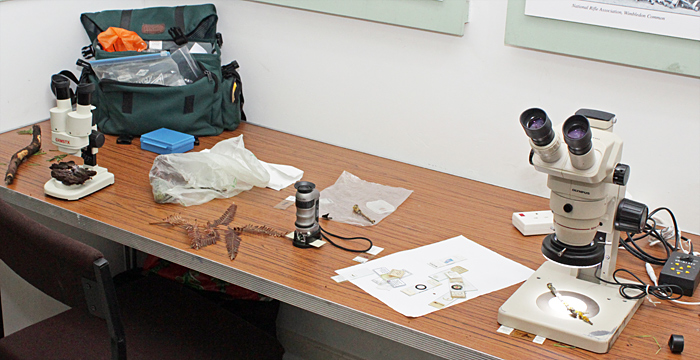
Alan’s microscopes
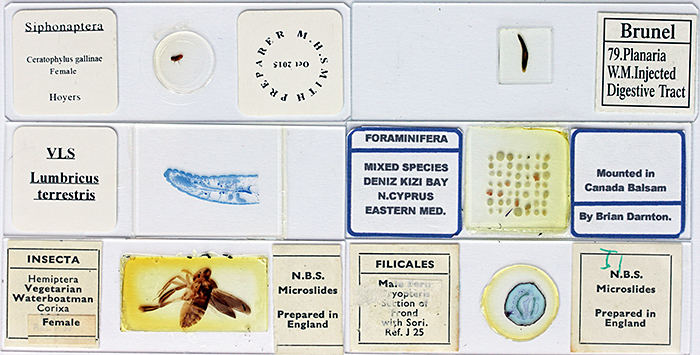
Microscope slides
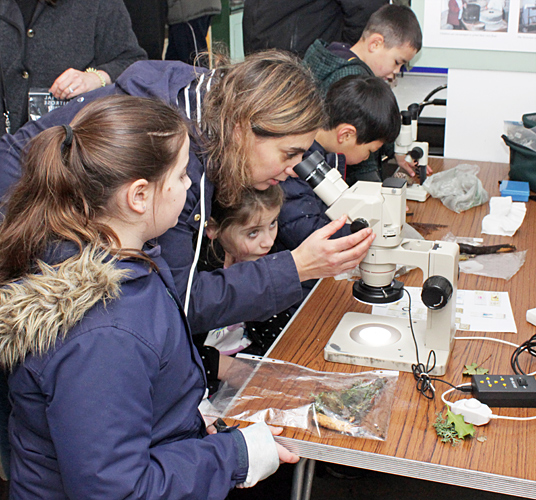
Family with microscopes
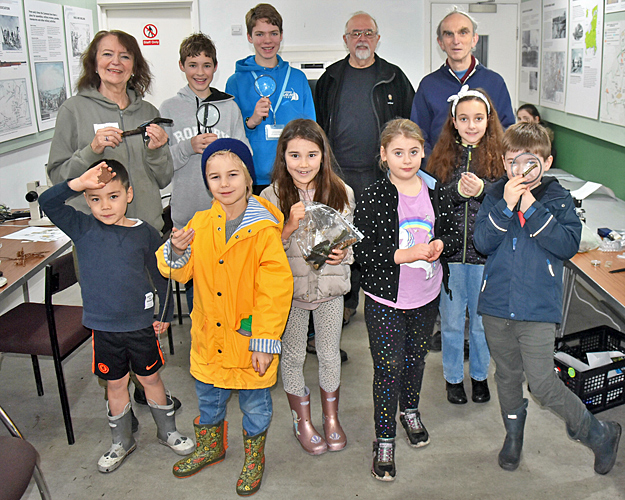
Group photo
Back row: Auriel, Oliver, Alexander, Paul and Alan
Commenting on this blog
If you would like to comment on anything in this blog, please send me a message.